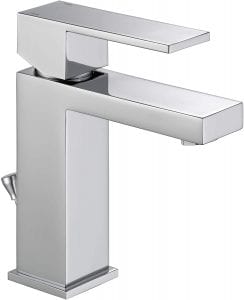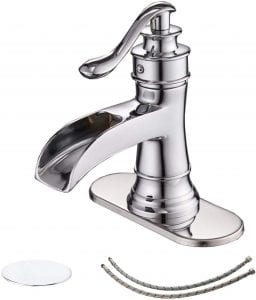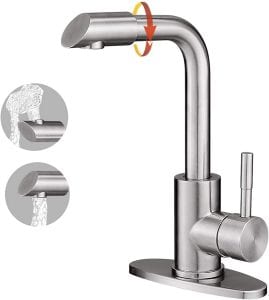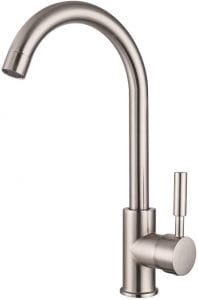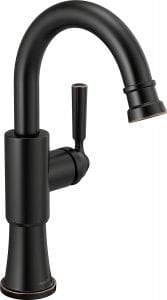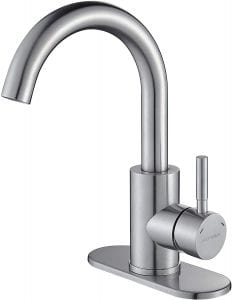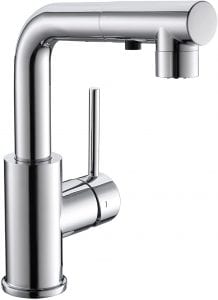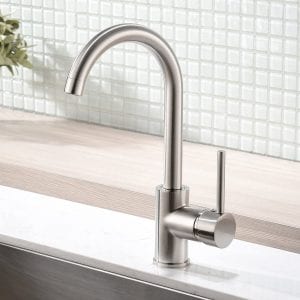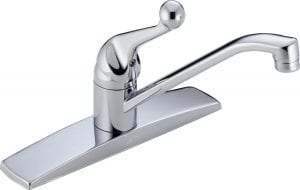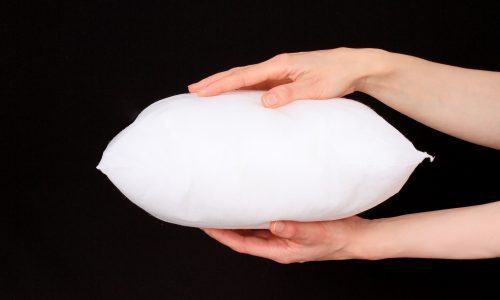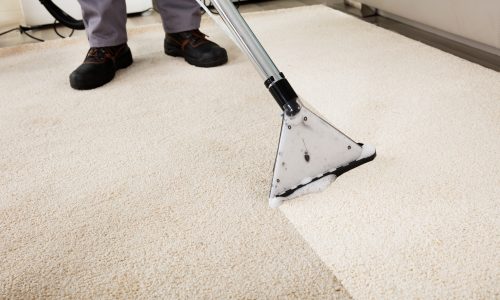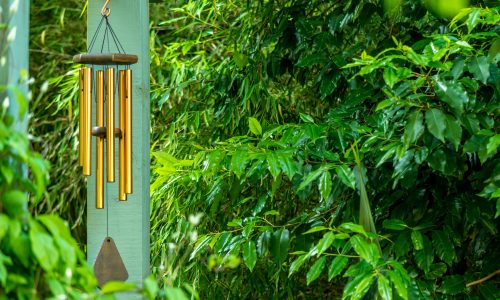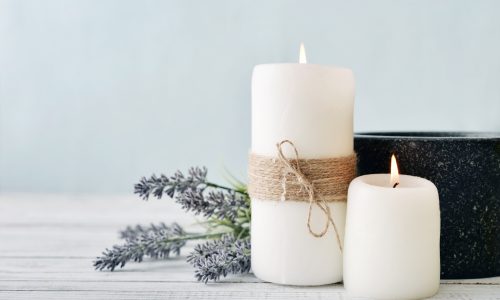The Best Single-Lever Faucets
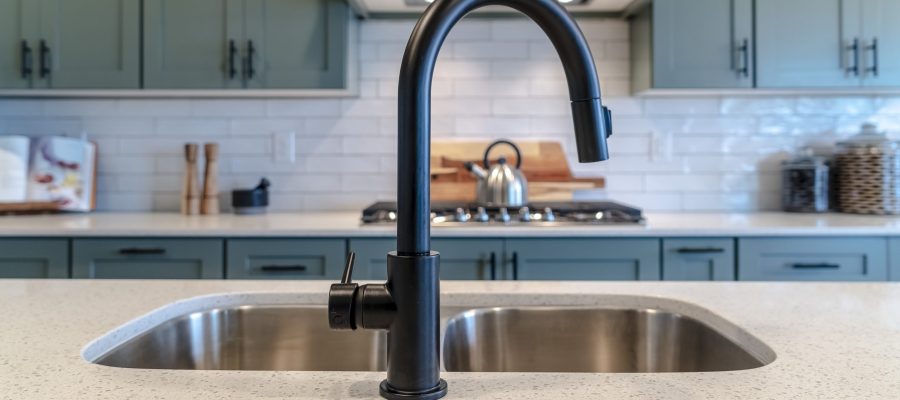
Our Review Process
Don't Waste Your Money is focused on helping you make the best purchasing decision. Our team of experts spends hundreds of hours analyzing, testing, and researching products so you don't have to. Learn more.
Our Picks For The Top Single Lever Faucets
- 1. Delta Faucet Modern Single Handle Chrome Bathroom Faucet
- 2. BWE Chrome Bathroom Faucet Waterfall Sink
- 3. Hoimpro Modern Single Handle 360 Rotate Spout Wet Bar Sink Faucet
- 4. Delta Faucet Peerless Westchester Single-Handle Bar Faucet, Oil Rubbed Bronze
- 5. Lordear 360 Degree Single Handle Bar Sink Faucet
- 6. RODDEX Stainless Steel Wet Bar Sink Faucet
- 7. Crea Pull Down Sprayer Brushed Nickel Bar Sink Faucet
- 8. Gimili Brushed Nickel Modern Bar Sink Faucet
- 9. Delta Faucet Chrome Single Lever Faucet
You'll get a water-saving, classy design with this bathroom faucet, which has a chrome finish. Everything you need to install the faucet is included, with support for single-hole or 3-hole, 4-inch configurations. If you have a 3-hole design, you'll need to purchase a deck plate before you can install it.
Water-Saving DesignThis bathroom faucet is built to use at least 20% less water than standard faucets.
With a clear, steady laminar stream, you'll get a consistent water flow each time. Designed for use in bathrooms, this faucet has a single handle that makes it easy to adjust the temperature and flow using just one hand. Available in seven different finishes, you'll get corrosion prevention, as well as resistance to fingerprints and smudges.
Seven Different FinishesYou'll get your choice of seven different finishes, including black, brushed gold, brushed nickel, chrome, copper, gold and oil-rubbed bronze.
You'll have full washing range with this rotating faucet and spout. The stainless steel construction is rust-resistant. The faucet has a brushed nickel finish.
Full Washing RangeThe faucet body and spout can rotate 360 degrees.
Designed for kitchens, this faucet features a leak-resistant design and durable build. The ceramic disc valve gives the handle a smooth glide while also ensuring it holds up over many uses. The spout is designed to provide a consistent spray without getting in the way of taller pots.
High-Arch SpoutThe high-arch sprout of this kitchen faucet keeps it well out of the way while you're washing taller pots.
Buying Guide
Your home faucets likely get a lot of use daily. In the kitchen, your faucet helps you wash your veggies and clean your dishes, and it might provide your drinking water. You need a kitchen faucet that offers a steady, strong stream of water, but it’s also important to make sure you have enough clearance for your tallest pots and pans.
For the bathroom, appearance is important, but functionality is an even bigger priority. You might not need as strong a stream as you will in the kitchen, but it’s still important to have a steady stream of water. In both the kitchen and bathroom, there’s value in having one-handed operation of a faucet. In recent years, the dual-knob bathroom faucets of the past have largely been replaced by faucets that require only one hand to control the temperature and stream.
Of course, no matter where your faucet will be going, compatibility is key. Pay close attention to the number of holes that have been drilled into your countertop and find a faucet that supports that design. You’ll also need to measure the distance between the center of the left and right holes, as well as measuring the distance between the hole and the wall behind it. You’ll want to make sure the faucet allows you to turn the knob easily without the wall getting in the way.
What to Look For
- Water flow can vary dramatically between faucets, and it can be tough to measure that until you have your faucet installed. Your water pressure will also factor into this, but if you install a faucet and the water flow is dramatically different from the faucet that was there before, the faucet itself is likely to blame.
- In the kitchen, a sprayer can come in handy. At one point, these were installed separately, but today’s kitchen sinks often have a piece you can pull away from the main spout to use for cleaning out the sink itself.
- You’ll also need a drain plug if your sink doesn’t already have one. Most kitchen faucets don’t include this, but some bathroom faucets provide one that matches the spout.
- One-handed operation is helpful, especially in the bathroom where one hand is often occupied with items like toothbrushes.
- There are various types of handles on spouts. Many are designed with a single lever that controls both the temperature and the water pressure. With some, you’ll push up or down to go from cold to hot and pull outward to control the pressure.
- Touchless faucets can come in handy, but they can be pricier than traditional faucets.
More to Explore
Indoor plumbing has been traced all the way back to ancient Egypt, where a water plumbing system was discovered at the pyramid of Cheops. In fact, archaeologists have unearthed signs of plumbing in Egyptian palaces going all the way back to 2500 B.C. The same material used in plumbing today, copper, was discovered in Egyptian plumbing.
Indoor plumbing didn’t become mainstream until the 1800s, but even then, it got a slow start. For the early part of the 19th century, only the wealthiest households had indoor plumbing. In 1829, the Tremont Hotel in Boston became the first hotel to offer indoor plumbing as an amenity to guests. A few years later, plumbing was installed at the White House.

